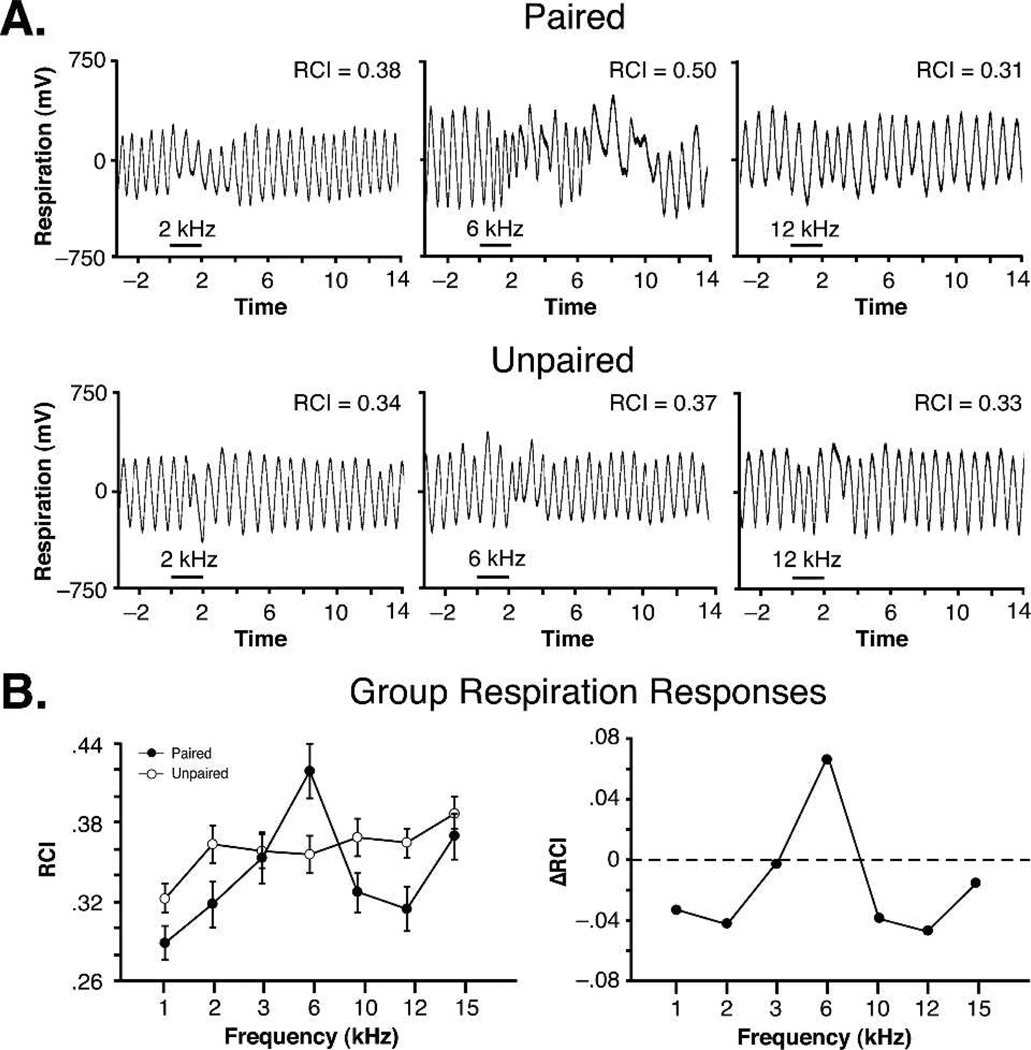Figure 10.
Respiration responses to post-training tone and generalization gradients, showing the induction of CS-specific memory after tone paired with stimulation of the nucleus basalis. (A) Examples of individual respiration records (with value of respiration change index, RCI) to three frequencies (2, 6, and 12 kHz) for one animal each from the paired and unpaired groups. The largest response was at the CS frequency of 6 kHz for the paired animal (RCI = 0.50). Horizontal bar indicates tone duration. (Bleft) Group mean (± SEM) change in respiration to all tones for both groups. The maximal response (left) was at 6 kHz for the paired group, but not for the unpaired group. The generalization gradient for only the paired group was significantly quadratic (P < 0.01), with responses to 6 kHz being of greatest magnitude. The group difference function (right) shows a high degree of specificity of respiratory responses to 6 kHz.

